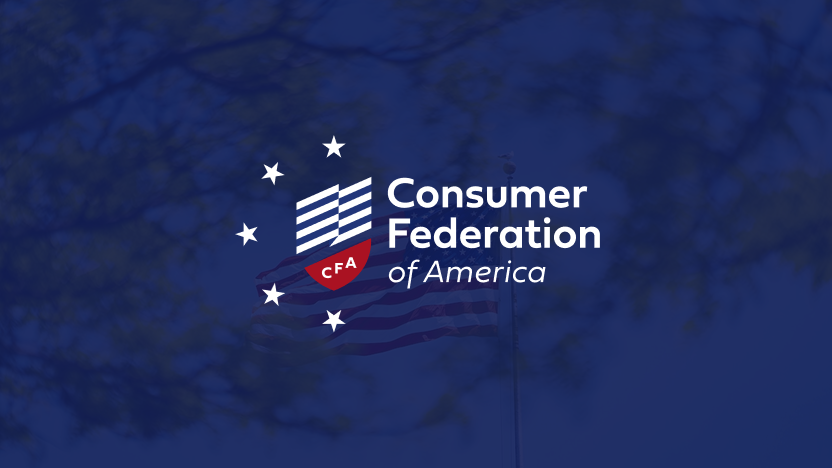Why the Environmental Protection Agency Should Grant a Clean Air Act Waiver to California for its Advanced Clean Cars Program
Statement of Dr. Mark N. Cooper
Director of Research, Consumer Federation of America (CFA)
to the
Environmental Protection Agency, Pubic Hearing, Docket ID No. EPA-HQ-OAR-2012-0562
September 19, 2012
The Consumer Federation of America strongly supports California’s Advanced Clean Cars Program and urges the Environmental Protection Agency to grant California’s waiver request as submitted.The Clean Air Act allows California to exercise independent authority to adopt more stringent emissions standards because of the state’s unique air pollution. Other states will follow California’s lead. California’s Clean Cars Program has helped to set us on a path that will improve the performance of light duty vehicles (cars and trucks) by a greater amount in a shorter time period than ever accomplished in U.S. history. CFA believes that the direction set by California and the states that follow its lead is a wonderful example of American federalism at its best.
The California Clean Cars Program enjoys widespread support from consumers, automakers and suppliers, business groups, national defense experts, public health advocates and environmentalists.
The CFA, Consumers Union and Consumer Action, support of the Advanced Clean Cars program because consumers agree that California and other states should be able to lead. CU’s latest survey on the subject found that California consumers want clean cars and agree that the state should lead:
- Eighty-one percent of respondents in California agreed that the state should require all automakers to reduce significantly the emissions of greenhouse gases from new cars, light-duty trucks and SUVs.
- Three quarters of California consumers – 75 percent – think California should require automakers to build fleets that include increasing numbers of zero emission vehicles, including electric and hydrogen fuel cell cars.
- Seventy-seven percent of Californians polled said there should be state requirements for oil companies to make cleaner fuels like hydrogen and electricity available for public consumption when there are enough cars in the area that use those fuels.
- consumer pocketbook savings of thousands of dollars per vehicle,
- reduced oil imports of billions of barrels of oil,
- increased gross domestic product of $150 billion, and
- over 100,000 additional auto sector jobs.
- Combined the “Clean Car” states represented the fifth or sixth largest auto market in the world. [3]
- The collective wisdom of so many states gave the California standard a great deal of credibility; the size of the market gave it economic clout.
- That cooperation produced an immediate acceleration of emissions standards that will save consumers over $35 billion in the 2012-2015 period alone, and
- It has now created the first long-term plan for fuel economy and clean air standards in the history of the nation that will yield the massive benefits identified above.
The proposed standards for which California has requested an EPA waiver, already supported by several states, continue to play exactly that role. In the early 2000s, when the California standard pointed the auto market toward hybrid technologies, the automakers said it could not be done. Today, there are over 150 hybrid and electric models in auto showrooms. The current proposed standard continues to nudge the market in that direction, while the technologies used to meet the California standards help automakers meet the national standard.
We applaud California’s leadership and the benefits it has provided the nation in improving air quality and increasing fuel economy and urge the EPA to grant the waiver.
[1] Comments of Consumer Groups: Consumer Federation of America, et al., Proposed Rule 2017 and Later Model Year Light-Duty Vehicle Greenhouse Gas Emissions and Corporate Average Fuel Economy Standards, Docket Nos. EPA-HQ-OAR-2010-0799; FRL-9495-2, NHTSA–2010–0131, 2/13/12.
[2]
[3] The Clean Cars states (Arizona, Connecticut, Washington D.C., Florida, Maine, Maryland, Massachusetts, New Jersey, New Mexico, New York, Oregon, Rhode Island, Vermont, and Washington) account for 40% of U.S. registered vehicles (Bureau of the Census, Statistical Abstract of United States; making the market larger than all markets except the rest of the U.S. the European Union and Japan,
[4] http://www.gpo.gov/fdsys/pkg/FR-2009-02-12/html/E9-2913.htm
[5] http://www.epa.gov/oms/climate/regulations/420f10014.htm


